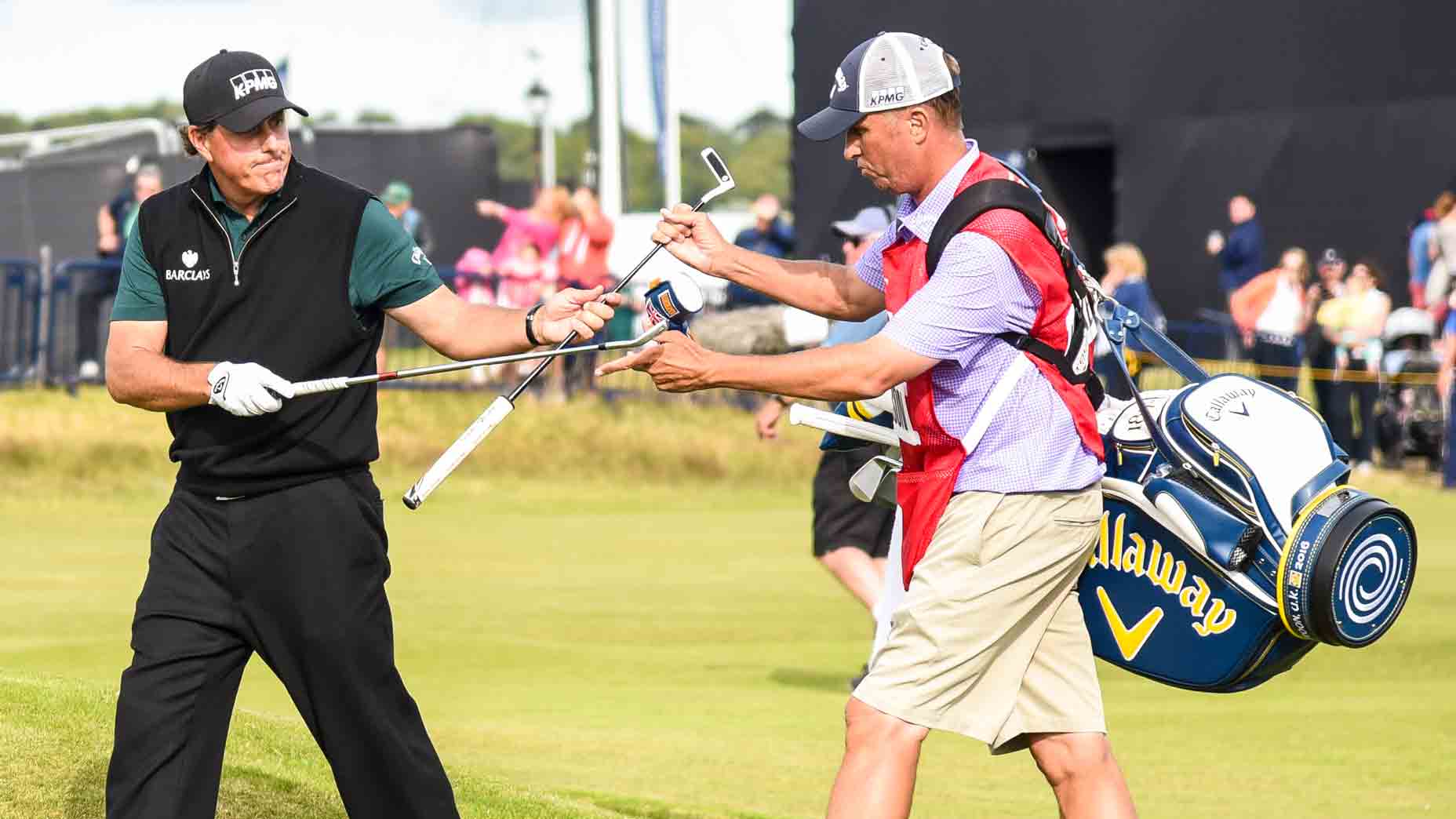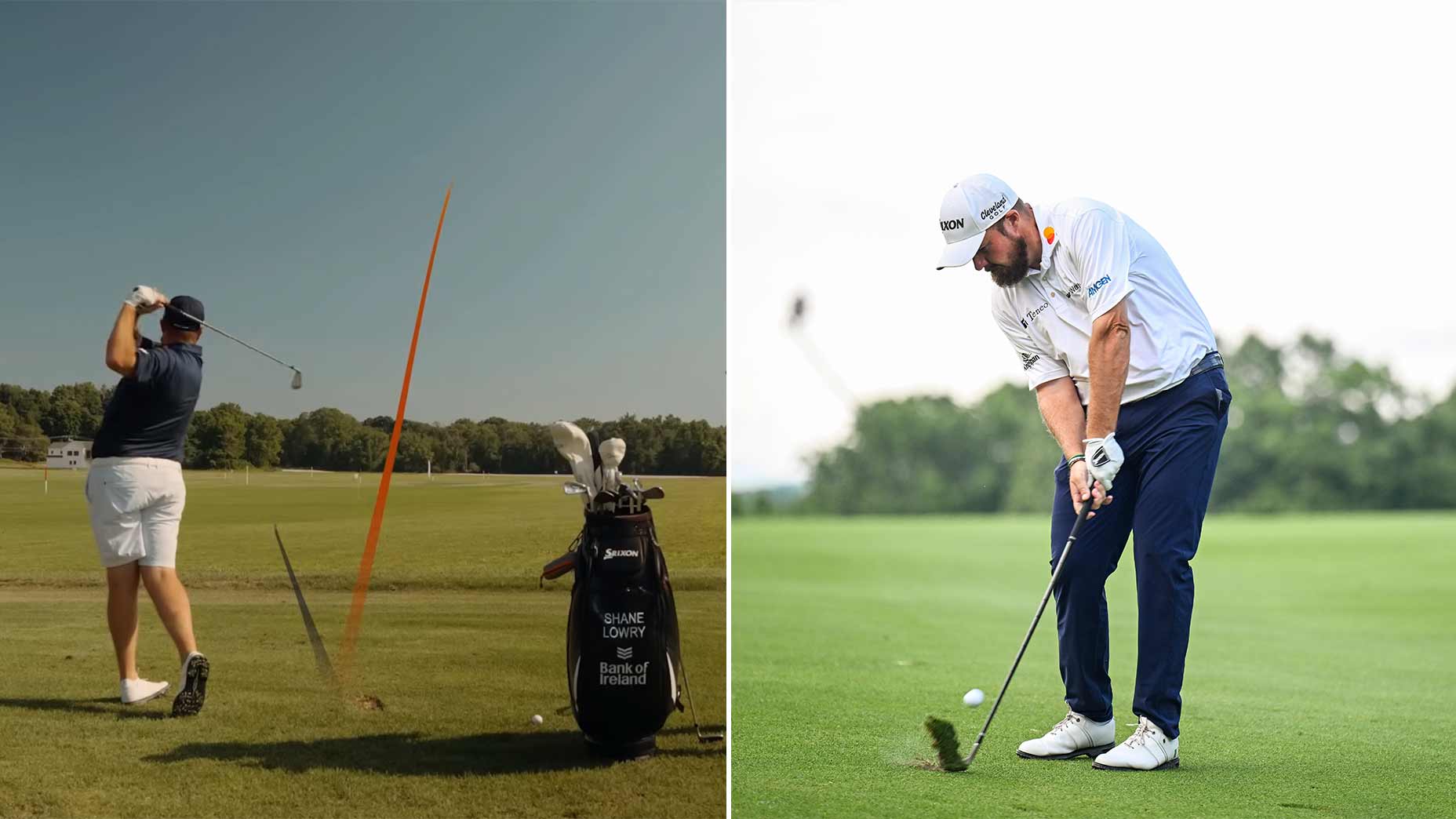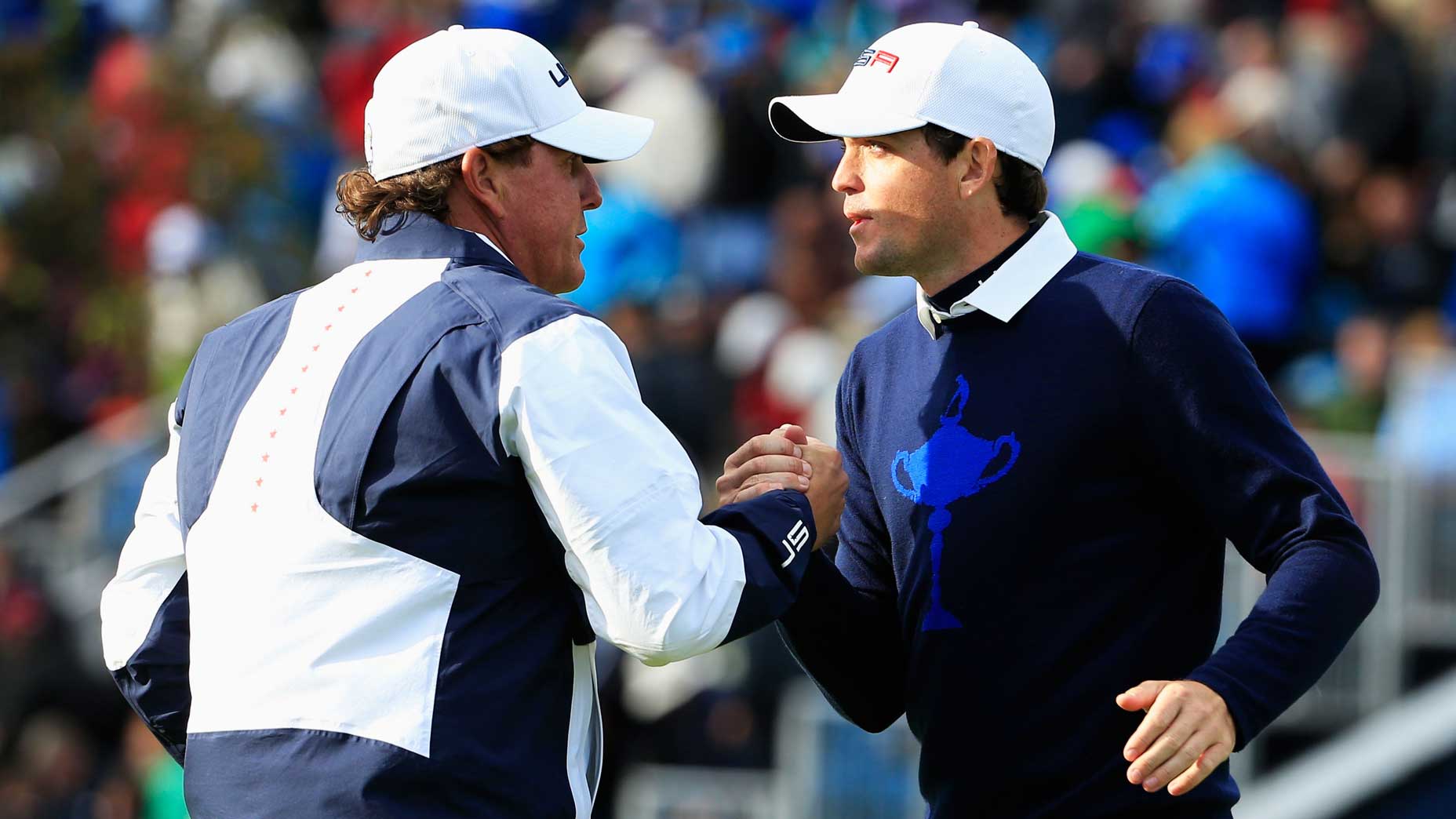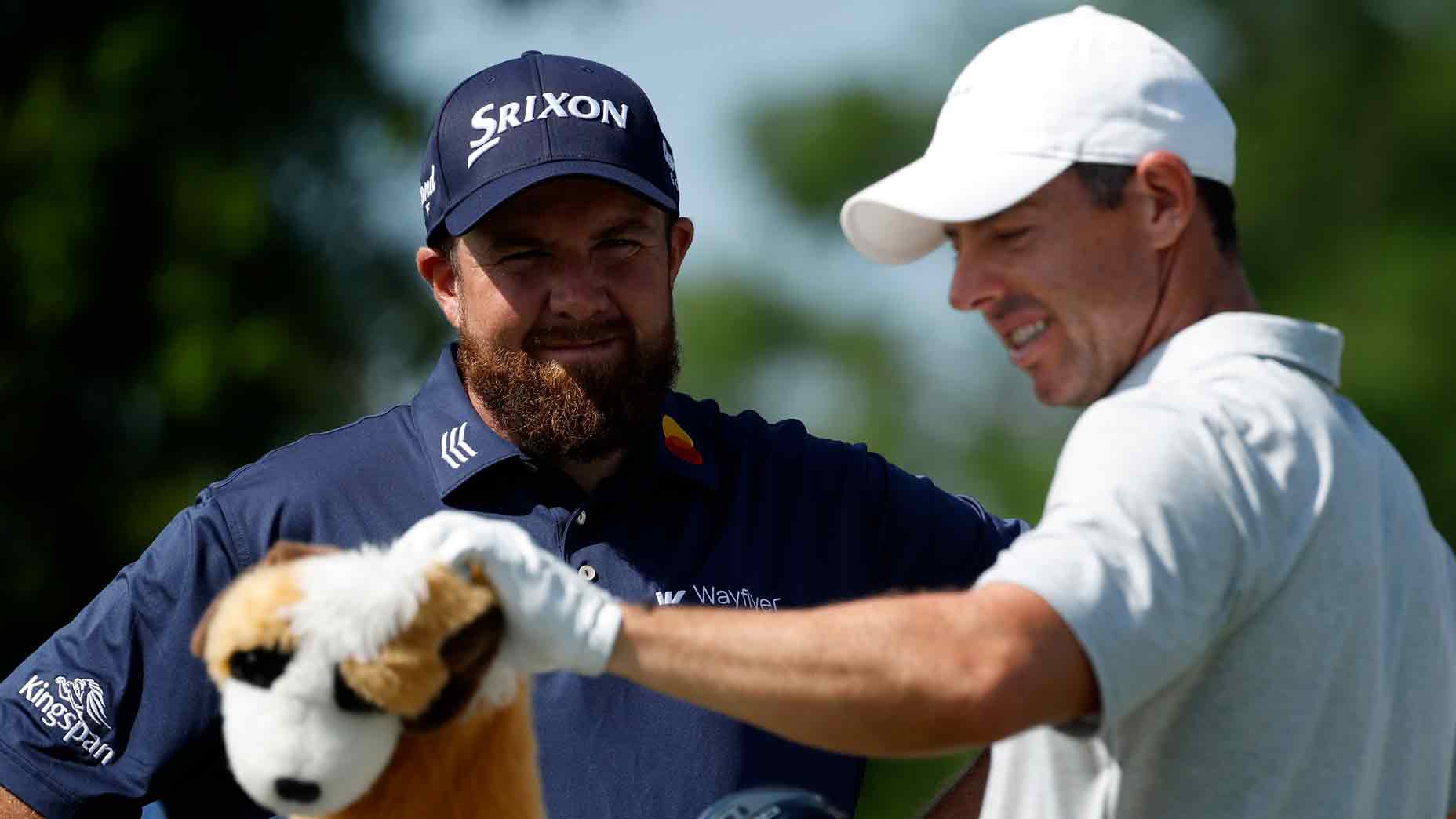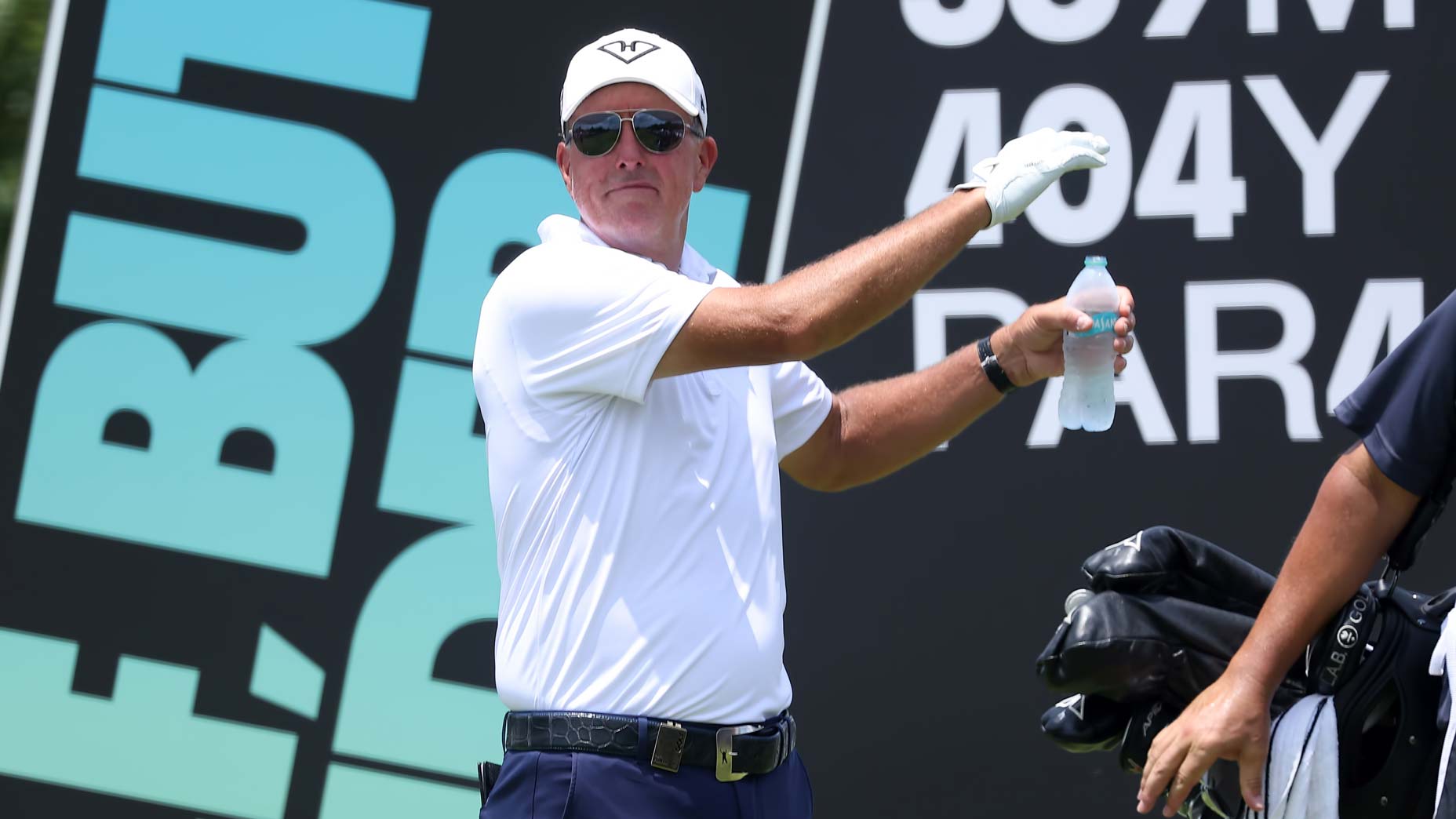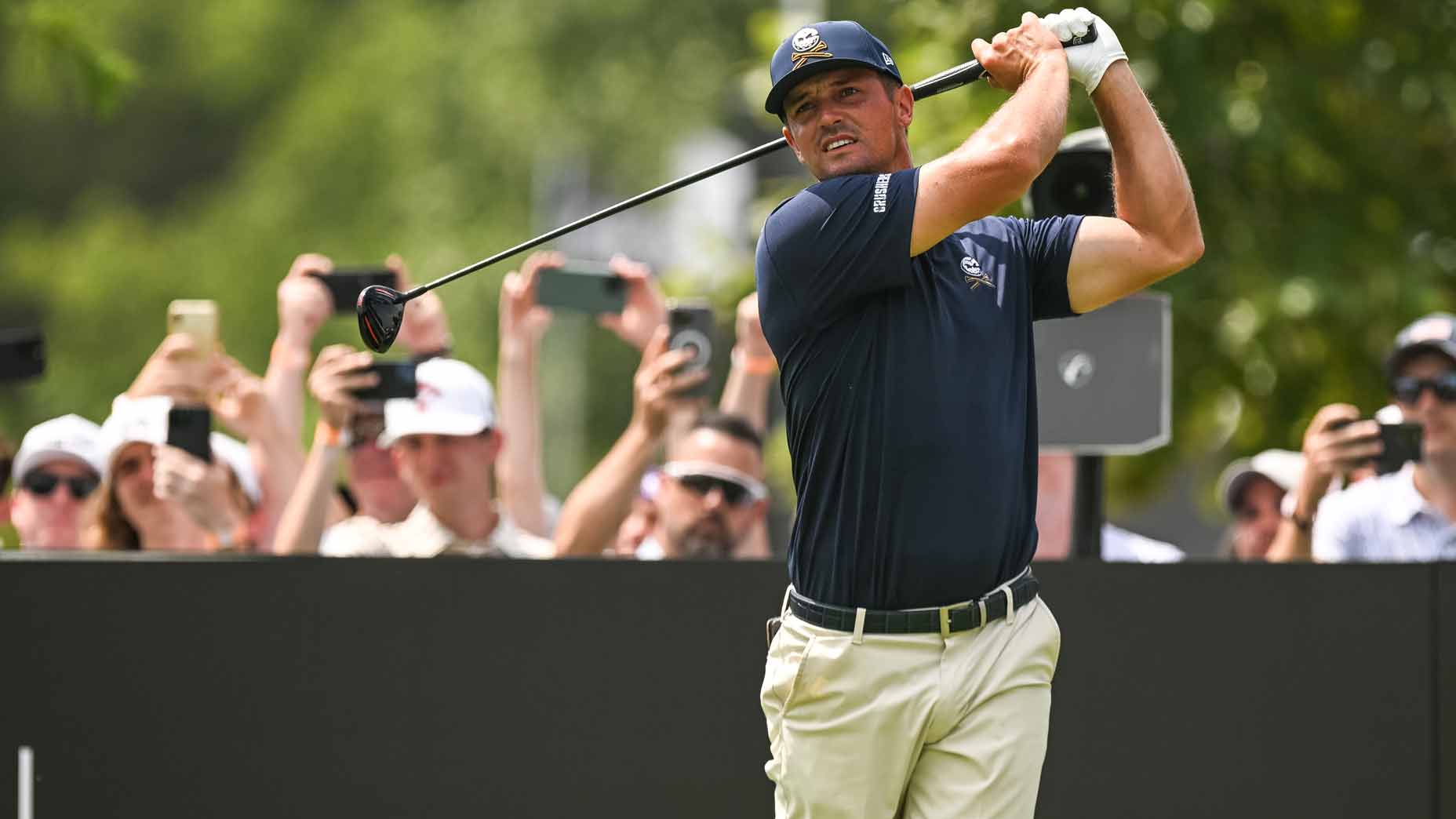Phil Mickelson taught me 10 lessons in 30 minutes. Here they are
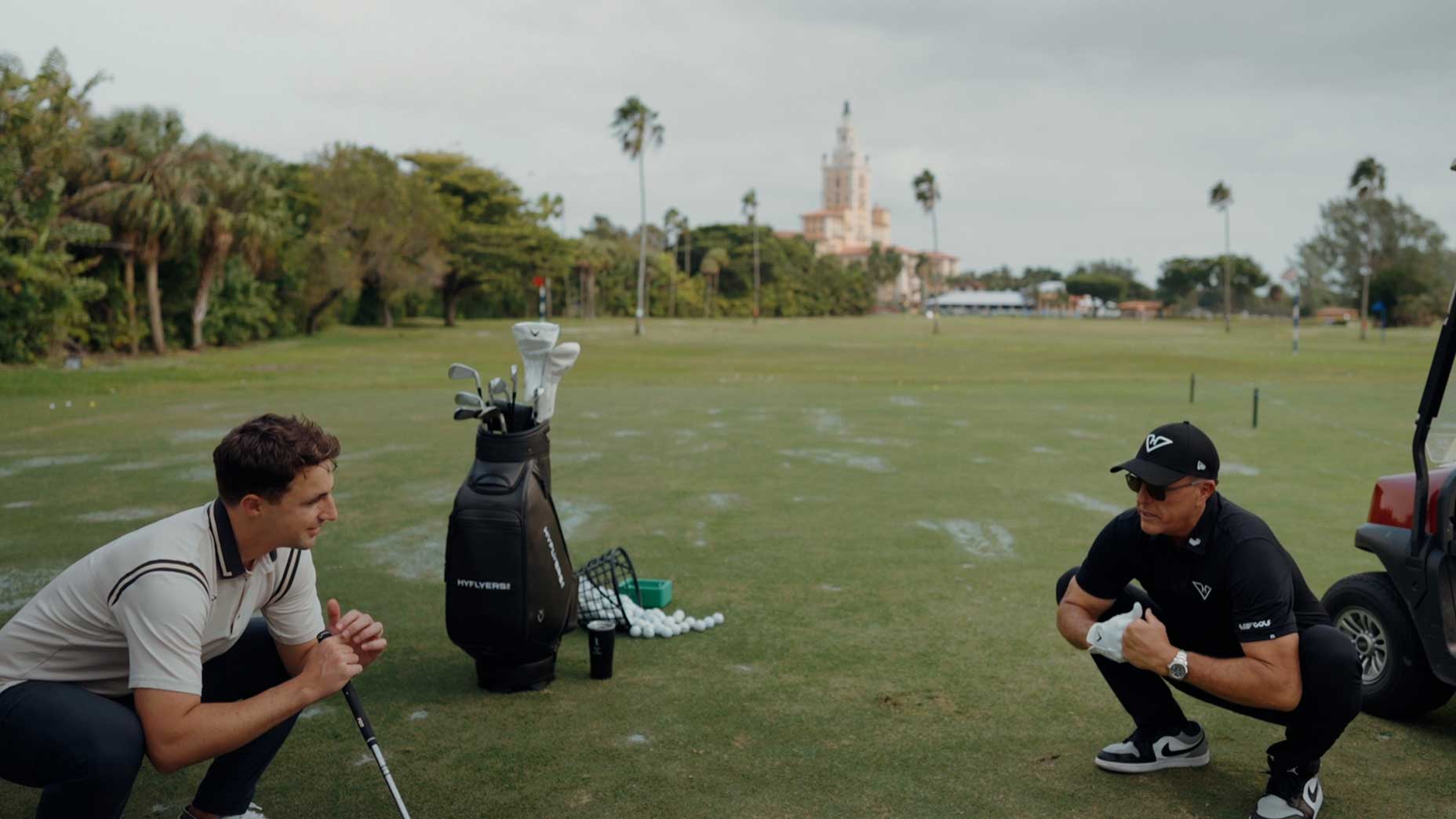
It was at this precise moment that I worried I was about to split my pants in front of Phil Mickelson.
Darren Riehl/GOLF
Phil Mickelson arrives as you’d expected, coffee mug in hand and sunglasses on face, dressed head-to-toe in HyFlyers black. He drives his golf cart onto the back of the range. He hooks a band to the side of his cart. And he begins a series of exercises, shouting out his shoulders, his back, his knees.
It’s activation time.
“Look, I feel stupid that this is my warmup,” he says a few minutes later, leaning over into a deep split. “But I’ve gotta get my hamstrings and low back stretched out.”
We’re at the Biltmore in Miami, an upscale hotel-slash-golf course and host of this year’s LIV content shoot. On the one hand, it’s a glitzy setup: if you walk past the enormous pool and into the Biltmore’s lobby you’ll smell gingerbread, enormous holiday decorations still in place for the megamillionaire golfers in town. On the other hand, the day is also rather everyman; despite LIV’s presence, the course is still open for public play, meaning Joe Golfer is taking divots on the range as a LIV pro captures team content beside him. (Even the below video with Mickelson, shot on the back of the range, attracts a small crowd by the end.)
Mickelson has joined us on-site for the filming of our latest episode of Warming Up, an in-depth interview series where pros take us through — you guessed it — some version of their warmup routine. And while Mickelson isn’t interested in deep-diving the geopolitics of the professional game, he’s more than happy to do what he does best: talk a little golf.
Over the course of the next half-hour, here’s what happens. And below that are a few snippets, in writing, of what I learned from a half-hour of Phil.
10 things I learned from Phil Mickelson
1. Mickelson’s warmup used to look a lot different.
Did Mickelson always warm up like this? He chuckles at the question.
“No,” he says. After a series of splits, squats and pliability exercises, I wonder — what did a warmup look like 25 years ago, then?
“I would just walk up and hit,” he says. He’d grab a sand wedge and go. Now there’s no just-grabbing anything. Even when he grabs a club he’ll grab a heavy one (“to build muscle strength”) and a lighter one (“to get your nervous system firing a little faster”) and then get to the in-betweeners.
2. Don’t worry about range distance.
We have a couple of game balls for Mickelson to hit, but mostly we’re just using Biltmore beaters. That’s all good, he says. He always discounts distance on the range.
(Maybe we should, too!)
“The range balls are colder,” he says. “They’re sitting out overnight. And they’ve been hit a bunch. They’re not going to be as long as the balls we use. So when I’m on the range and I’m using distances and I’m using my monitor, I’m not overly concerned with how far my irons are going, because they’re always going to be about four to six yards shorter than the ball I’m actually using, because it’s newer and fresher and so forth.”
3. How to learn short yardages? Hit ’em!
Hopefully this isn’t too contradictory to that last point, but within say, 60 yards, a distance that strikes fear in many amateurs, Mickelson is an all-time legend. His secret? It’s not really a secret at all. The best way to dial in half-swings, he says, is by hitting half-swings.
“I hit 1000-1500 balls every month to those numbers and I just build a reference. So I just know that that’s 30 yards,” he says.
4. Mickelson was never a big tennis player.
He’s describing hitting a draw and he’s using table tennis as his vehicle. When you’re hitting a ping-pong ball with topspin, he explains, “I’ll take my rear arm and I’ll just let it rotate over.”
It’s a terrific visual, particularly given Mickelson’s rich history of Ryder Cup ping-pong. Was he a racket-sports guy as a kid?
“You had to run a lot in tennis,” he says. “Not my thing.”
5. A longer backswing means more speed — and more height.
Mickelson’s “Pelz” shot is some variation of 10 yards off his stock shot. He makes that adjustment in part by shortening his backswing. The result? A shot that comes in lower and with less spin than his full-speed approaches; those jump off the face higher but spinnier. Different situations, he says, demand different shots.
“If I go 20 off Pelz, now we’re talking a really low shot,” Mickelson says, taking a short backswing and sending a low-spin flyer cruising through the wind, unbothered. Understanding speed and spin, he says, helped him adjust to soft conditions (at Pebble Beach in the winter) and firm conditions (at the Open Championship in the summer) and become a champion in both settings.
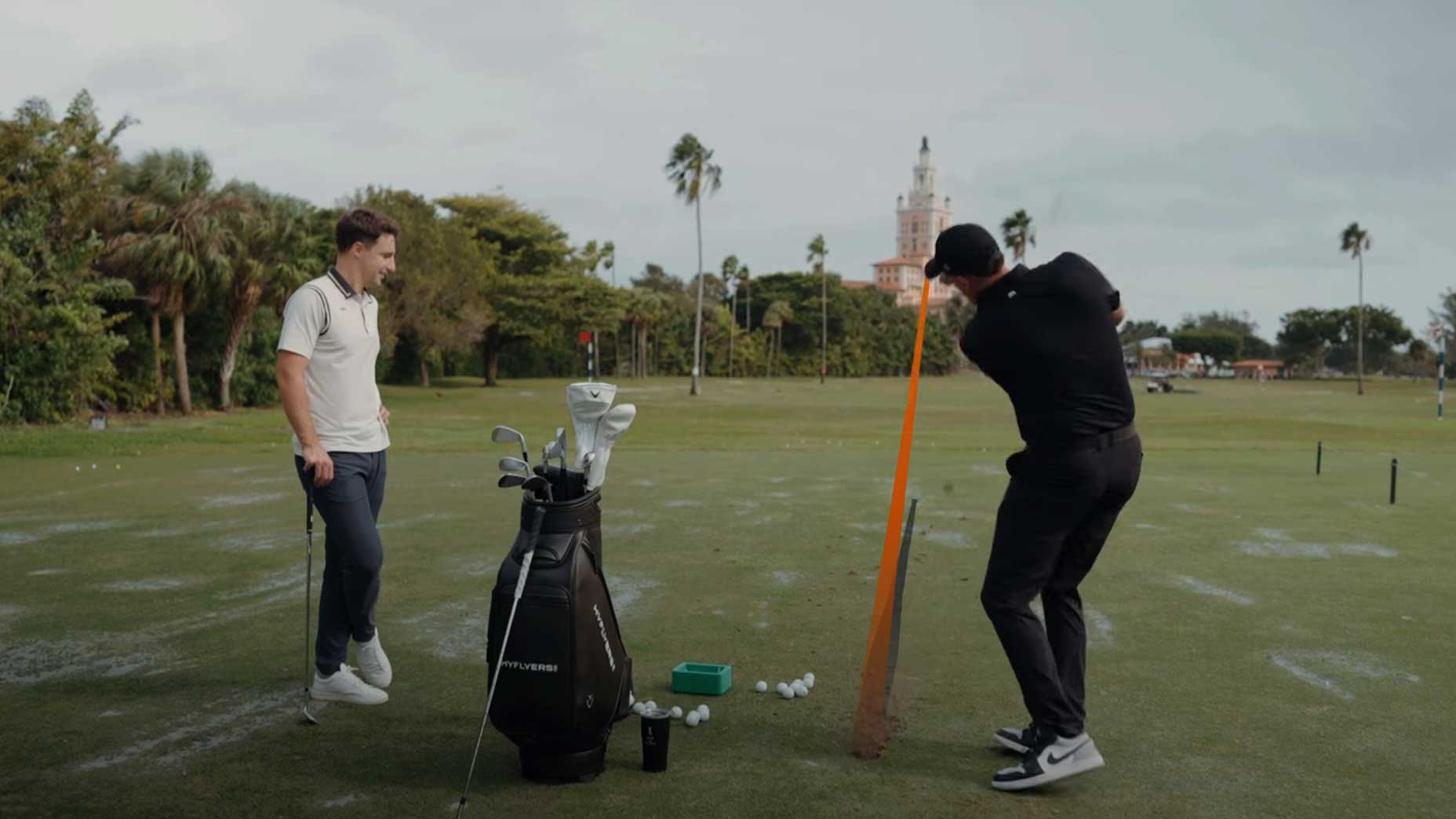
6. He has a catalog of specific shots from throughout his career.
“Yes,” he says, when I ask whether he can tap back into shots from five, 10, 15 years ago. “And that’s why my practice is going to be a little bit different than others … I’ve already hit the shots. I know what it’s like to hit them. But I have to pull them out.”
There’s repetition, he says. And then there’s the ability to dial up the shot you’ve rehearsed. You need both.
7. Variety is important.
A crucial part of Mickelson’s warmup, he says, is building in variety and specificity.
“I have 10 balls counted and I’m going to go through 10 shots and I’m going to vary it,” he says. That means visualizing, feeling and executing a shot in practice so he’s better prepared to do so in tournament play. That means picking a specific hole. It means choosing a specific shot. And it means holding himself accountable for the process and the result.
8. Keep those hands forward.
“All s—- ballstrikers will start with their hands back. All good ones will start with their hands forward. You at least have a chance; you’re set up for success here,” he says, showing that forward position.
For what it’s worth, this doesn’t seem to be a universally held belief: Brandel Chamblee has appeared in the comments of our Instagram post with this contribution:
“I guess Ben Hogan was a ‘s—- ball striker'”.
9. Don’t be afraid of putting (yeah, putting) on the range.
“I’ll go hit some putts,” Mickelson says. He cites Augusta, a place he likes to putt from off the green in dry conditions. But too often, he says, golfers will ignore the speed of the off-green grass.
“One of the mistakes that I’ve made in the past and other players will make when they’re putting from off the green is they’ll look at the green,” he says. “And they’ll get this sense of the speed of the putting green, not the fringe. So when I’m putting from off the green I don’t look at the green, I only look at the fringe and try to get a touch for off the green as well as on.”
I can’t promise nobody will look at you funny if you whip out the flat stick to finish off a bucket of balls. But press on, knowing who inspired you.
10. Take any advice with a grain of salt.
“I might give you an idea,” he says, asked what he tells inquisitive pro-am partners. “It may not work for some people.”
Including, I suppose, everything I just typed.
But there’s more! Check out the full video below for Phil Mickelson in full go mode.
Dylan (cautiously) welcomes your feedback at dylan_dethier@golf.com.



